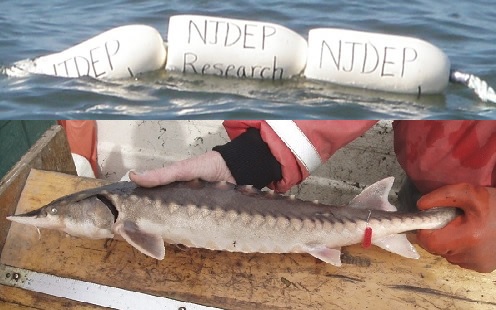
On March 13, 2019, the NJ Division of Fish and Wildlife (Division) deployed acoustic receivers in the Delaware Bay to track migration patterns of Atlantic sturgeon. For an eighth year, 19 receivers have been set in water depths generally less than 20 feet. Those fishing in inshore waters may encounter white buoys marked “NJDEP Research”.
As part of a multi-state collaborative effort, the Division has partnered with several states to develop a multi-year effort directed at providing state, federal, and regional management authorities with information necessary to successfully conserve and ultimately restore the population of sturgeon in the mid-Atlantic region.
With the endangered species listing of Atlantic sturgeon effective April 6, 2012, research on this species has gained in significance and importance. The Division’s portion of the project is to purchase, assemble, deploy and maintain 19 receivers in the Delaware Bay. Data is downloaded monthly from each receiver to detect movement of Atlantic sturgeon tagged with acoustic telemetry tags.
The receivers complement the existing receiver array within Delaware Bay, specifically on the NJ side, to ensure complete coverage of the sampling area. The additional coverage allows for greater detection of Atlantic sturgeon and provides the ability to monitor immigration and emigration from the Delaware Bay.
In 2018, the receivers recorded 74,822 detections from 281 different fish. Over 65 percent of the known fish detected were Atlantic sturgeon, while 24 percent were sand tiger sharks and 10 percent were striped bass. Other species detected included cownose ray. The majority of Atlantic sturgeon were detected in May and were tagged by Delaware State University.
Please contact Heather Corbett 609-748-2020 for exact receiver coordinates or for more information about the project.
Reports of sturgeon sightings and interactions are important to this research; please use the Sturgeon Report Form.
For more information about Atlantic sturgeon see Atlantic Sturgeon – Endangered Species (pdf, 385kb) from the 2013 Marine Digest.
Related
